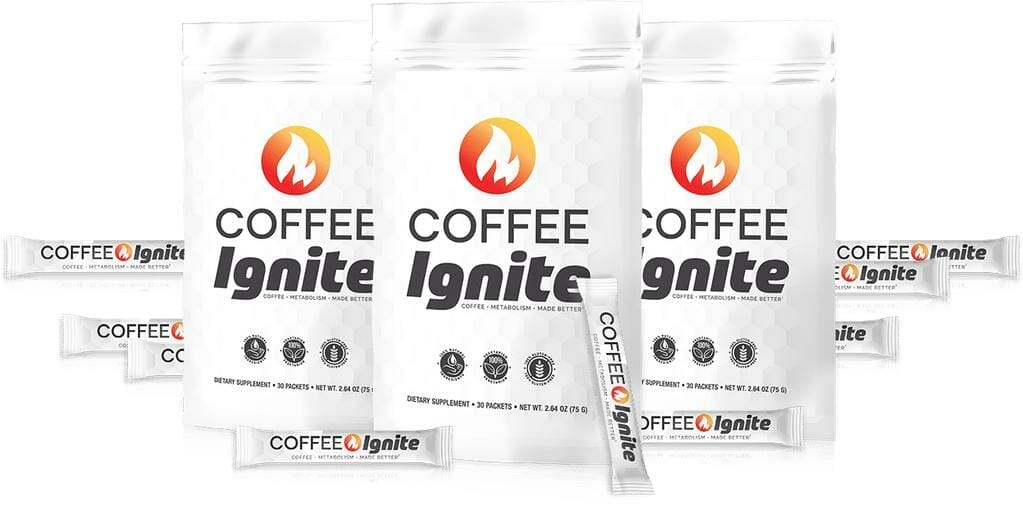Hello there! In this article, we will be discussing how to lose weight as a delivery driver. We understand that being on the move all day can make it challenging to maintain a healthy weight, but fear not, we’ve got you covered. Throughout this article, we will share practical tips and tricks that you can easily incorporate into your routine. So, if you’re ready to shed those extra pounds and improve your overall well-being, keep reading!

How To Lose Weight As A Delivery Driver
As delivery drivers, we spend long hours on the road, constantly on the move to ensure that packages and meals are delivered promptly to customers. Our job can be physically demanding and mentally exhausting, leaving little time to focus on our own health and well-being. However, with some strategic planning and a commitment to prioritizing our own health, it is possible to incorporate healthy habits into our busy schedules and achieve weight loss goals.
Eating Nutrient-Dense Meals
One of the key aspects of maintaining a balanced diet is to ensure that we are consuming nutrient-dense meals. This means choosing foods that are rich in vitamins, minerals, and other essential nutrients, while also being mindful of portion sizes. By including a variety of fruits and vegetables in our meals, we can ensure that we are getting a wide range of nutrients to support our overall health.
Including a Variety of Fruits and Vegetables
Fruits and vegetables are not only packed with vitamins and minerals, but they also provide fiber, which can help us feel full and satisfied after a meal. As delivery drivers, we often have limited time for sit-down meals, so it’s important to find creative ways to incorporate fruits and vegetables into our diet. Whether it’s adding sliced tomatoes and lettuce to a sandwich or keeping a bag of baby carrots and grapes as a snack, finding ways to include these nutritious options can make a big difference in our overall health.
Choosing Whole Grains over Refined Carbohydrates
Carbohydrates are an important source of energy, especially for individuals with physically demanding jobs like ours. However, not all carbohydrates are created equal. By choosing whole grains over refined carbohydrates, we can ensure that we are getting the maximum nutritional value from our food. Whole grains, such as brown rice, whole wheat bread, and quinoa, are rich in fiber and other important nutrients, while refined carbohydrates like white bread and pasta lack these essential elements. By making this simple swap, we can promote better digestion and long-lasting energy levels throughout our day.
Reducing Intake of Processed Foods
Processed foods may be convenient, but they often contain high amounts of unhealthy fats, sugars, and additives that can be detrimental to our health. These foods are often high in calories and low in nutritional value, making it easier for us to consume excess calories without feeling satisfied. By making a conscious effort to reduce our intake of processed foods, we can lower our risk of weight gain and improve our overall health. Instead, we can opt for whole, unprocessed foods such as fresh fruits and vegetables, lean proteins, and whole grains.
Limiting Added Sugars and Sodas
Added sugars, such as those found in sodas and sweetened beverages, can contribute to weight gain and a variety of health issues. These sugary drinks often provide empty calories without any nutritional value. By opting for water or unsweetened beverages instead, we can avoid unnecessary calories and lower our risk of health problems. If we find it challenging to drink plain water, we can infuse it with fruits or opt for herbal teas, which provide hydration without the added sugars.
Planning and Preparing Meals in Advance
As delivery drivers, our schedules can be unpredictable, and finding time for meals during our shifts may be difficult. However, by planning and preparing our meals in advance, we can ensure that we have healthy options readily available.
Creating a Weekly Meal Plan
One of the most effective ways to stay on track with our nutrition goals is by creating a weekly meal plan. By taking a few minutes each week to plan out our meals, we can ensure that we have a balanced diet and avoid making impulsive, unhealthy choices. We can choose a variety of recipes that include lean proteins, whole grains, and plenty of fruits and vegetables. Once we have our meal plan set, we can make a shopping list and purchase all the necessary ingredients, so we’re prepared for the week ahead.
Cooking and Packing Healthy Lunches
Rather than relying on fast food or takeout options for our lunch breaks, it’s beneficial to cook and pack our own healthy lunches. This allows us to have control over the ingredients and portion sizes, ensuring that we’re consuming nutritious meals that align with our weight loss goals. We can prepare meals in larger batches, such as grilled chicken and steamed vegetables, and separate them into individual portions to take with us on our deliveries. Investing in some reusable containers and a cooler bag can make it easier to transport our meals and keep them fresh.
Preparing Grab-and-Go Snacks
In addition to planning and preparing our meals, it’s essential to have healthy snacks readily available for those moments when hunger strikes on the job. Instead of reaching for high-calorie and sugary snacks, we can prepare grab-and-go options such as cut-up fruits, nuts, or low-fat yogurt. These snacks provide a good balance of carbohydrates, protein, and healthy fats, keeping us satisfied between meals and helping to prevent overeating.
Avoiding Unhealthy Fast Food Options
While it may be tempting to rely on fast food options for convenience during our shifts, it’s important to remember that these choices can hinder our weight loss efforts. Fast food is often high in calories, unhealthy fats, and sodium, making it challenging to maintain a balanced diet. By making a conscious effort to avoid these options and instead opt for our own home-cooked meals or healthier alternatives, we can make significant strides towards our weight loss goals.

Staying Hydrated and Avoiding Sugary Drinks
As delivery drivers, it’s crucial to prioritize staying hydrated throughout the day. Proper hydration not only supports our overall health but can also help us manage our weight.
Drinking Sufficient Water Throughout the Day
Water is essential for numerous bodily functions and can aid in weight loss by keeping us hydrated and helping to control our appetite. It’s recommended to drink at least eight glasses (64 ounces) of water per day, but this amount may vary depending on individual factors such as activity level and climate. To ensure we’re drinking enough water, we can carry a reusable water bottle with us during our shifts and make a conscious effort to take sips regularly. If we find it challenging to drink plain water, adding a slice of lemon or cucumber can add some flavor without the added calories.
Avoiding High-Sugar Beverages and Energy Drinks
Sugary beverages such as sodas, energy drinks, and sports drinks can be high in calories and contribute to weight gain. These drinks often provide little to no nutritional value and can lead to increased cravings for unhealthy foods. By avoiding these high-sugar beverages and opting for healthier alternatives, we can significantly reduce our calorie intake and support our weight loss efforts. Herbal teas and infused water, such as cucumber or mint-infused water, can be refreshing and hydrating options without the added sugars.
Opting for Herbal Tea or Infused Water
In addition to plain water, herbal teas can be a great alternative to sugary drinks. Herbal teas are infused with various herbs and can provide additional health benefits, such as aiding digestion or promoting relaxation. Brewing a hot cup of herbal tea during our breaks can not only keep us hydrated but also provide a sense of comfort and relaxation during our busy days. Infused water, such as adding slices of lemon, cucumber, or fresh mint leaves to a pitcher of water, can also be a tasty and refreshing option.
Incorporating Physical Activity into Routine
As delivery drivers, we spend a significant amount of time behind the wheel or on our feet. It’s crucial to find ways to incorporate physical activity into our routine to support our weight loss goals and overall well-being.
Finding Opportunities for Exercise
While our job may be physically demanding at times, it’s important to find additional opportunities for exercise throughout the day. This can include taking short walking breaks during our deliveries, parking farther away from our destinations to encourage more walking, or doing quick stretches or exercises during our breaks. By incorporating these small bursts of activity into our day, we can increase our calorie burn and improve our cardiovascular health.
Stretching and Engaging in Light Exercises During Breaks
Taking a few minutes during our breaks to stretch and engage in light exercises can have a significant impact on our overall well-being. Simple stretches and exercises, such as neck rolls, shoulder shrugs, and squats, can help alleviate muscle tension and stiffness that can occur from sitting for prolonged periods. These exercises not only improve our physical well-being but also help to clear our mind and increase our energy levels for the rest of the day.
Utilizing Cycling or Walking for Deliveries
If possible, utilizing cycling or walking for shorter deliveries can be an excellent way to incorporate physical activity into our daily routine. Not only does this reduce our carbon footprint and contribute to a greener environment, but it also provides an opportunity for exercise. Cycling or walking can help increase our cardiovascular endurance, strengthen our leg muscles, and burn calories. Additionally, it can be a great way to explore new neighborhoods and enjoy the fresh air during our shifts.
Joining a Gym or Fitness Class
For those who prefer a structured exercise routine, joining a gym or fitness class can provide a variety of options to keep us active and motivated. Many gyms offer flexible membership options that cater to individuals with varying schedules. We can explore different classes such as group workouts, yoga, or dance classes to find an activity that we enjoy and look forward to. Having a scheduled time to exercise can help us stay committed to our goals and provide an opportunity to socialize with like-minded individuals.
Committing to Regular Exercise
While finding time for exercise as delivery drivers can be challenging, it’s essential to commit to regular physical activity. Whether it’s scheduling dedicated workout sessions, incorporating small bursts of exercise throughout the day, or actively seeking opportunities for movement, consistency is key. By making exercise a priority, we can significantly contribute to our weight loss efforts and overall well-being.

Practicing Portion Control and Mindful Eating
Practicing portion control and mindful eating are essential habits for weight management. By being mindful of our eating habits and paying attention to our body’s cues, we can promote healthier eating behaviors and prevent overeating.
Using Smaller Plates and Bowls
Using smaller plates and bowls can help us control our portion sizes and prevent overeating. Research shows that when we eat from larger plates or bowls, we tend to consume larger portions without even realizing it. By simply using smaller dishware, we can trick our minds into feeling satisfied with smaller amounts of food. This can be particularly beneficial when we’re dining on the go or eating in our vehicles during our deliveries.
Eating Slowly and Savoring Each Bite
Eating slowly and savoring each bite can have a significant impact on our eating habits and weight management. When we eat quickly, we tend to consume more calories before feeling full, which can contribute to overeating. By slowing down our eating pace, taking smaller bites, and chewing thoroughly, we can give our bodies more time to register feelings of fullness. This can help us consume fewer calories and feel more satisfied after a meal.
Listening to Hunger and Fullness Cues
Learning to listen to our body’s hunger and fullness cues is an important part of mindful eating. Sometimes, our busy schedules can cause us to ignore or suppress these signals, leading to overeating or not eating enough. By tuning in to our bodies and eating when we’re truly hungry, as well as stopping when we’re comfortably full, we can maintain a healthier relationship with food and prevent unnecessary weight gain.
Avoiding Distractions While Eating
Eating mindfully involves being fully present and engaged with our food. Distractions such as watching TV, scrolling through our phones, or working while eating can lead to mindless eating and overconsumption. By setting aside dedicated time for meals and minimizing distractions, we can focus on enjoying our food, appreciating the flavors, and recognizing our body’s cues of hunger and fullness. This can contribute to healthier eating habits and weight management.
Managing Stress and Emotional Eating
As delivery drivers, we often face tight schedules, traffic congestion, and demanding customers, which can lead to high levels of stress. Stress can trigger emotional eating, where we turn to food for comfort or as a coping mechanism. It’s important to find healthy ways to manage stress and avoid emotional eating.
Practicing Stress-Relief Techniques
There are numerous stress-relief techniques that we can incorporate into our daily routine to help manage stress. Deep breathing exercises, meditation, yoga, or even simple activities like taking a walk or listening to calming music can all help reduce stress levels. Finding what works best for us and making time for these practices can make a significant difference in managing our stress levels and preventing emotional eating.
Finding Healthy Coping Mechanisms
Instead of turning to food as a coping mechanism, it’s important to find healthier ways to deal with stress and emotional situations. Engaging in hobbies or activities that we enjoy, such as reading, painting, or listening to music, can help distract our minds and provide a sense of calm. Additionally, talking to a trusted friend or family member, seeking support from a therapist or counselor, or participating in a support group can provide a safe outlet for expressing emotions and finding healthier coping mechanisms.
Identifying Emotional Eating Triggers
Understanding the triggers of our emotional eating can help us develop strategies to overcome these behaviors. Whether it’s a specific emotion, situation, or even a specific type of food, becoming aware of what triggers our emotional eating can empower us to make conscious choices and find alternative ways to cope. By keeping a journal or seeking professional guidance, we can gain insights into our emotional eating patterns and develop strategies to manage them effectively.
Seeking Support from Friends or Professionals
Weight loss and overall well-being are complex journeys that can benefit from support and guidance. Seeking support from friends, family, or professionals can provide us with a network of individuals who understand our challenges and can offer encouragement, motivation, and accountability. Whether it’s a workout buddy, a support group, or consulting with a registered dietitian or personal trainer, having others to share our experiences and talk through our goals can be incredibly beneficial.
Getting Sufficient Rest and Sleep
Rest and sleep are crucial factors in maintaining a healthy lifestyle and achieving weight loss goals. Our bodies need adequate rest to recover, repair, and function optimally.
Maintaining a Consistent Sleep Schedule
As delivery drivers, our schedules might vary, but making an effort to maintain a consistent sleep schedule can significantly contribute to our overall well-being. Aim for seven to eight hours of quality sleep each night, ensuring that we’re allowing ourselves enough time for rest and recovery. By establishing a bedtime routine and sticking to it as closely as possible, we can train our bodies to recognize when it’s time to wind down and prepare for sleep.
Creating a Relaxing Bedtime Ritual
Creating a relaxing bedtime ritual is an effective way to signal to our bodies that it’s time to unwind and prepare for sleep. This can involve activities such as taking a warm bath, reading a book, practicing gentle stretching or yoga, or listening to soothing music. By incorporating relaxing activities into our evening routine, we can promote a more restful sleep and support our weight loss goals.
Limiting Stimulants Close to Bedtime
Stimulants such as caffeine and nicotine can interfere with our sleep quality and make it more challenging to fall asleep. Limiting our intake of these substances, especially in the hours leading up to bedtime, can help promote more restful sleep. Instead, opt for decaffeinated beverages or herbal teas that are naturally caffeine-free. It’s also important to note that alcohol can disrupt sleep patterns, so consuming it in moderation and allowing time for it to metabolize before bedtime is advisable.
Tracking Progress and Setting Realistic Goals
Tracking our progress and setting realistic goals are important components of any weight loss journey. By monitoring our achievements and celebrating milestones along the way, we can stay motivated and committed to our health goals.
Recording Food and Exercise
Keeping a record of our food intake and exercise can provide valuable insights into our habits and progress. Tracking what we eat, including portion sizes and nutritional information, can help us identify areas for improvement and hold ourselves accountable. Similarly, recording our exercise activities can allow us to monitor our physical activity levels and identify patterns or trends. This information can help us make informed decisions and refine our strategies for weight loss.
Celebrating Milestones and Achievements
Every step towards our weight loss goals is a milestone worthy of celebration. Whether it’s reaching a certain number on the scale, completing a challenging exercise routine, or consistently practicing healthy habits, we should take the time to acknowledge and celebrate our achievements. By recognizing our accomplishments, we can boost our confidence and motivation, fueling our desire to continue making positive changes.
Monitoring Weight and Body Measurements
While the number on the scale is not the only indicator of progress, it can be helpful to monitor our weight over time. However, it’s important to remember that weight alone does not reflect changes in body composition or overall health. Measuring body circumferences, such as waist and hip measurements, and tracking changes in clothing size can provide a more comprehensive picture of our progress. These measurements can help us recognize changes that may not be reflected in weight alone, such as increased muscle mass or improved body shape.
Setting Incremental and Attainable Weight Loss Goals
Setting realistic and attainable weight loss goals is essential for long-term success. Instead of focusing solely on a desired end weight, it’s beneficial to break down our goals into smaller, manageable milestones. By setting incremental goals, we can track our progress more effectively and maintain a positive mindset throughout our weight loss journey. Celebrating each milestone along the way can provide a sense of accomplishment and motivate us to continue making healthy choices.
Seeking Professional Guidance and Support
While implementing healthy habits as delivery drivers can contribute to successful weight loss, seeking professional guidance and support can enhance our efforts and provide a wealth of knowledge and resources.
Consulting a Registered Dietitian
Registered dietitians are qualified professionals who can provide personalized guidance and support in achieving our weight loss goals. They have extensive knowledge in nutrition and can help us create a personalized meal plan that aligns with our specific needs and preferences. A registered dietitian can also provide insights into portion control, mindful eating, and strategies for managing cravings. Consulting with a registered dietitian can be a valuable investment in our health and weight loss journey.
Working with a Personal Trainer
For individuals looking to incorporate exercise in their weight loss journey, working with a personal trainer can provide expert guidance and support. Personal trainers are skilled professionals who can create tailored workout programs, provide instruction on proper exercise techniques, and help us stay motivated and accountable. They can also design routines specifically tailored to our job requirements as delivery drivers, ensuring that we maximize our physical fitness potential while minimizing the risk of injury.
Joining Weight Loss Support Groups
Joining a weight loss support group can provide a sense of community and encouragement. These groups offer a platform for individuals with similar goals to share their experiences, challenges, and successes. They can provide valuable insights, tips, and motivation that can help us stay on track with our weight loss goals. Many support groups meet online, making it accessible for individuals with busy schedules or varying shift times.
Conclusion
As delivery drivers, we often prioritize the needs of others over our own health. However, by implementing healthy habits and prioritizing our well-being, it is possible to achieve and maintain a healthier lifestyle. By focusing on eating nutrient-dense meals, planning and preparing meals in advance, staying hydrated, incorporating physical activity into our routine, practicing portion control and mindful eating, managing stress and emotional eating, getting sufficient rest and sleep, tracking progress and setting realistic goals, and seeking professional guidance, we can successfully lose weight and improve our overall well-being. By taking care of ourselves, we can continue to excel in our profession while enjoying a healthier and happier life.








Leave a Reply
You must be logged in to post a comment.